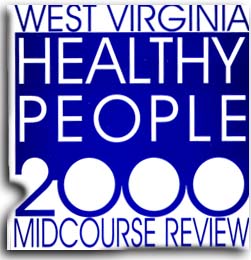 |
Occupational
Safety and Health |
 |
Occupational
Safety and Health |
Background
Fatal and nonfatal work-related injuries and diseases result in personal tragedy and societal costs in the billions of dollars annually. A great deal of this loss is clearly preventable.
Many chronic diseases are known to be caused or promoted by occupational factors. Although the precise risk of occupational diseases is not known, occupational exposures and stresses play a significant role in the development and course of chronic diseases. Historically, many lung diseases were among the first chronic diseases associated with work. It is known that certain occupational factors also increase the risk of cardiovascular illness, the most common chronic disease. Estimates of occupational cancers range from between 1% to 10% of all cancers, with most clustered around 3%-5%.
The Workers' Compensation Division of the Bureau of Employment Programs addresses occupational health and safety in the state. The Division's Safety and Loss Advisory Committee is the lead entity designated to address Objectives 10.0-10.3. The committee's mission is to assist in developing rules and regulations to promote workplace health and safety programs and encourage compliance with occupational health and safety laws, regulations, and standards.
The Objectives
OBJECTIVE 10.1 Reduce deaths from work-related injuries to no more than 8 per 100,000 full-time workers.
UPDATE Objective 10.1 was revised to reflect a more realistic goal for the state. The original objective reitierated the national objective of 4 fatalities per 100,000 workers. Because West Virginia is one of several states with prominent mining and timbering industries, the national goal was unrealistic. Reducing the national goal by one-half is possibly attainable. No baseline data are currently available for this objective.
OBJECTIVE 10.2 Reduce work-related injuries resulting in workers' compensation claims to no more than 6 cases per 100 full-time workers.
UPDATE Objective 10.2 was also revised. The original objective was to reduce work-related injuries resulting in medical treatment, lost time from work, or restricted activity to no more than 3.5 per 100,000 full-time workers. This was calculated using a far-too-low number of injuries reported for1989 in the Annual Report of the Workers' Compensation Division, which cannot be documented. In 1995, 48,291 total claims were reported, including 32,842 for medical treatment and 5,083 for temporary disability, yielding a rate of 7 claims per 100 full-time workers.
The state objective matches the national objective for the year 2000, which is based upon a baseline of 7.7 per 100 in 1987 (Annual Survey of Occupational Injuries and Illnesses, U.S. Dept. of Labor).
OBJECTIVE 10.3 Reduce hepatitis B infections among occupationally exposed workers to an incidence of no more than 82 cases per year.
UPDATE To date, there is no program collecting data on Hepatitis B infections by occupation. There has been, however, a gradual decline in overall cases reported since 1990. In 1991, OSHA required all health care workers to be vaccinated against the Hepatitis B virus (HBV). This requirement should have a positive impact on the reduction of risk for acquiring HBV. Meeting the target for this objective will depend on the availability of vaccinations for occupationally exposed workers, effective education programs, and monitoring standards for assessing immunization levels.
Meeting the Objectives
Health
Promotion Channels Worksites |
Occupational diseases can be prevented by eliminating harmful exposures, reducing exposures to safe levels, or by protecting the worker from harmful exposures. The health promotion channels that can be used to inform and educate the public about the dangers of harmful exposures are listed in the box above (and explained in greater detail in the Introduction to this document). The Bureau for Public Health's Occupational Health and Safety Program is currently limited to asbestos control.
Occupational Safety and Health - Meeting the Objectives
Lead Entity: |
Plan Coordinator: |